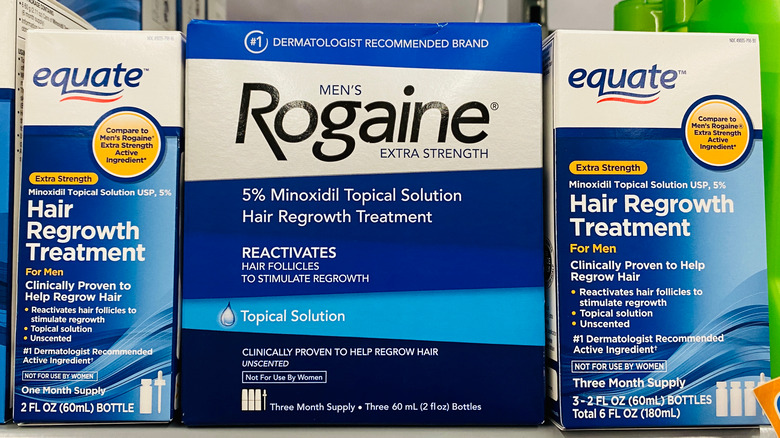This Is What Happens If You Put Rogaine On Your Beard
If you had access to television in the late '90s and early 2000s, you've seen a Rogaine commercial. They followed the same format as most of the other order-from-home ads, but they had something other products at the time did not: staying power.
According to their website, Rogaine was first available for men in 1988. The company released a product for women four years later. Then, after another four years, both products became available to the wider public. It is now stocked at many grocery and drug stores, available for anyone to pick up when they're out doing their shopping.
More than three decades after its release, Rogaine's main ingredient, minoxidil, remains the only one FDA-approved to regrow hair (via Rogaine). It's a success that many have tried to apply to areas other than hair regrowth, the most common being improved beard growth. Reddit threads and Quora posts abound on the topic. Rogaine has yet to offer a beard-specific product, but that hasn't stopped home-based experiments revolving around this off-label use for it.
It might just work
As a general rule, it's a good idea to double-check any information found on social media sites such as Quora and Reddit. Users on these sites may post outside sources, of course. But if they don't, it is best to find your own. Thankfully, sites that have established a reputation for solid reporting can offer answers where social media may fall short.
Men's Health explains that as far as current research shows, applying minoxidil to the face is fairly safe. There are some side effects to using minoxidil on the face, such as skin irritation and unwanted hair in odd and unintended places such as the tip of the nose. However, a 2016 study published in The Journal of Dermatology found the product safe for use in improving beard growth.
Unfortunately, the effects aren't permanent. Rogaine is only effective as long as a person uses the product (via Rogaine's FAQ). Once minoxidil application stops, so does the improved hair growth. Another concern is that men with coarse, thick, or curly hair may experience more ingrown hairs, at least at the beginning (via Men's Health). But as Beardbrand points out after expressing this concern, ingrown hairs can be corrected and are a risk for anyone trying to grow a beard.


